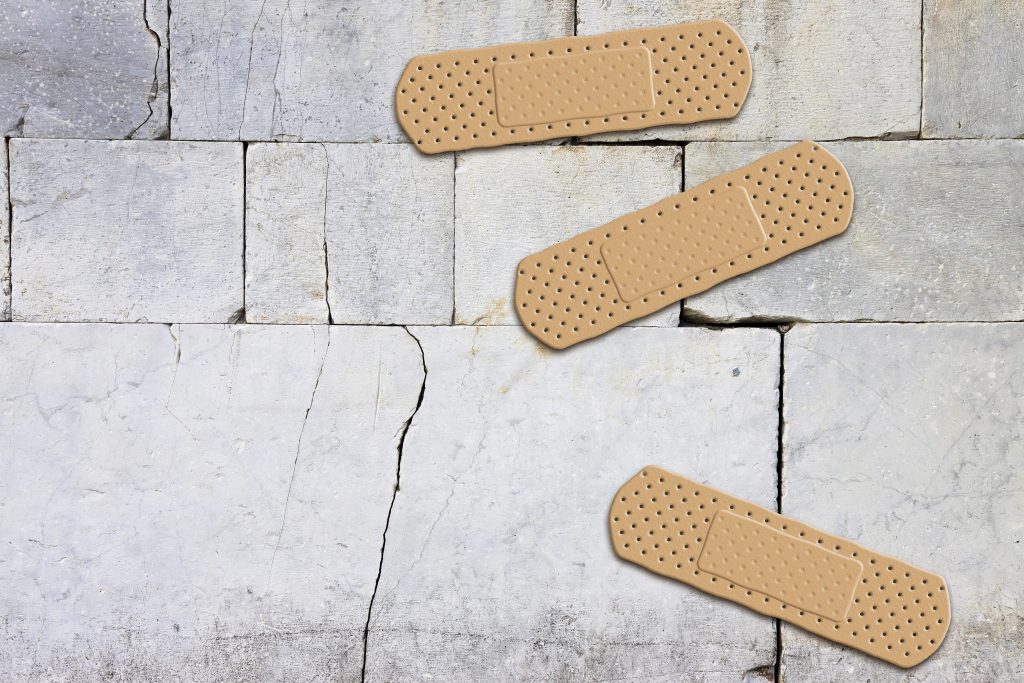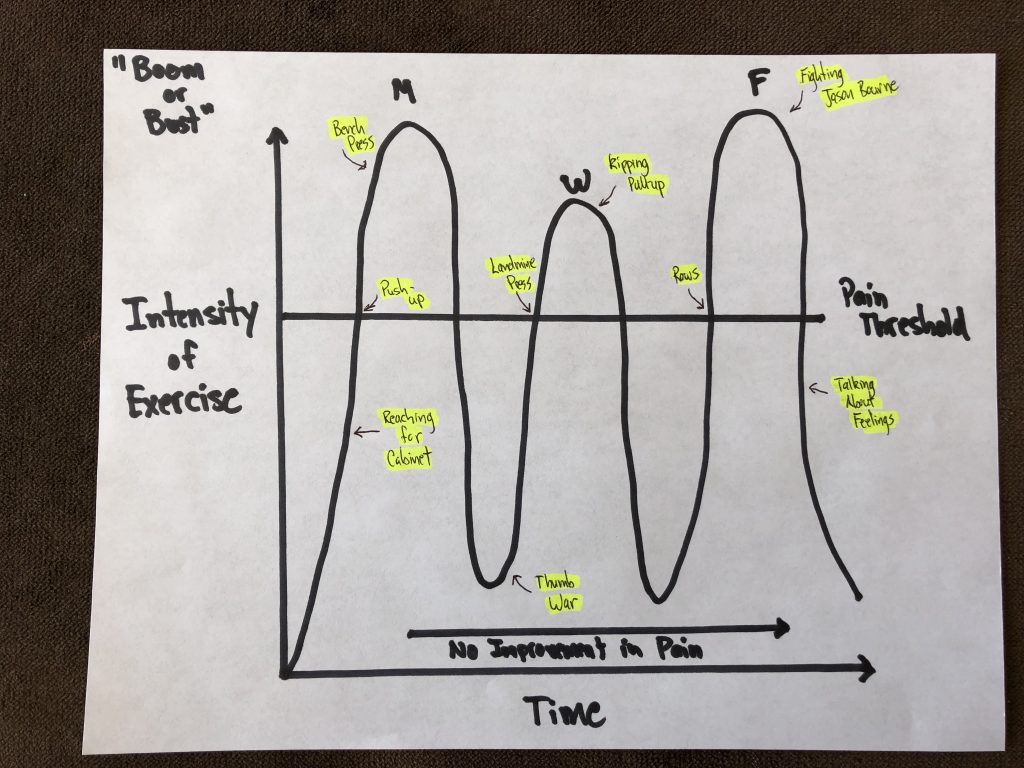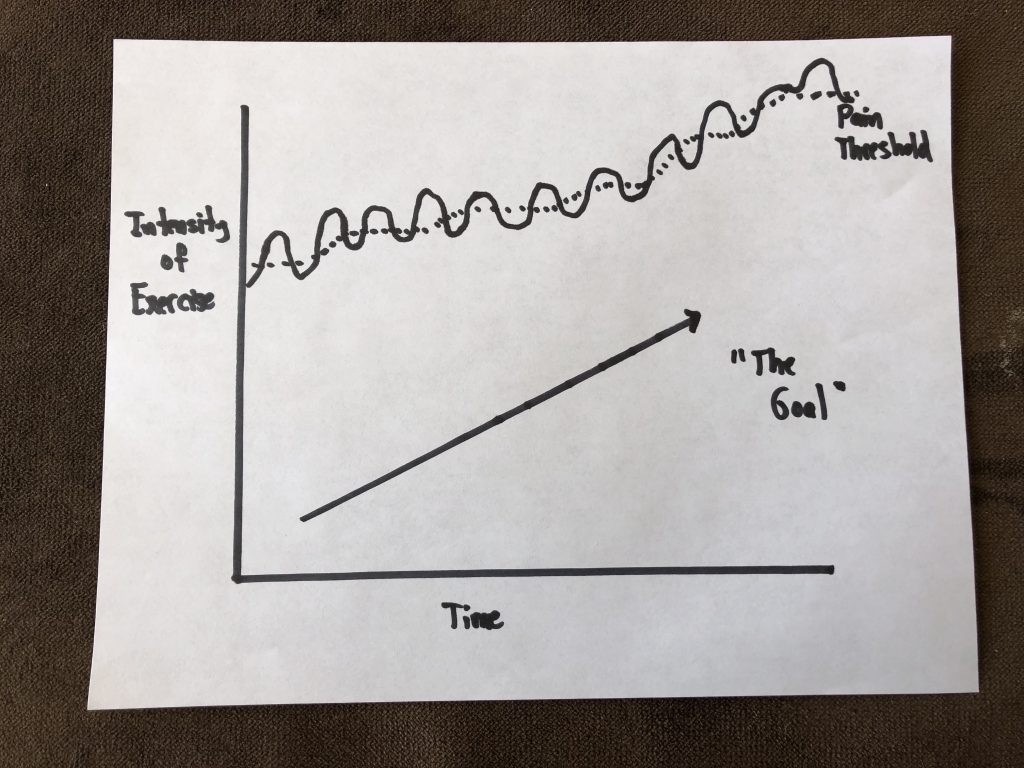Boom or Bust: Why You’re Always Hurt
I work with hurt people for a living.
It’s not uncommon for people to seek out a coach or trainer because an exercise doesn’t feel right or because something – a shoulder, a knee, lower back, their soul perhaps – routinely hurts and they can’t seem to get out of their own way.
That’s where I come in to save the day.
Most of the time.
To fix someone’s squat technique and to maybe (probably) give him or her a reality check.

Copyright: france68 / 123RF Stock Photo
Boom or Bust
This is a term I stole from a friend of mine, Dan Pope of Champion Physical Therapy & Performance, and to a larger degree has its roots from a presentation I watched him do centered around the conversation of understanding shoulder pain.1
“Boom or Bust” refers to the person who handles their business as follows:
Train/Overload –> Do a lot –> To the point where it becomes painful –> Get pissed off, becomes upset, is inconsolable, and inevitably increase their volume of ice cream and Julia Roberts’ movies –> Feels better –> Repeat –> What an asshole.
I’m sure many of you reading – whether the above sequence of events describes you or some of your clients – can commiserate.
It can all be summarized using the following graph:

Again, props to Dan Pope. I essentially drew his graph, but added a little Tony LOLs.
What this depicts is a scenario and approach that keeps the alarm system sensitive as well as pain levels up. They train hard on Monday and hit their bench pretty aggressively, of course.
A day or two passes, the shoulder feels okay, and they decide to test the waters again and perform a bunch of high-rep push jerks. Another day or two passes, the shoulder starts to feel, normal again, and since they have zero fucks to give, decide it would be a swell idea to perform kipping pull-ups paired with handstand push-ups for AMRAP on broken glass.
All they do is perpetually plow through their pain threshold and the cycle continues over and over and over again like an episode of Russian Doll.
This, of course, is absurd, and makes zero sense.
Conversely, what also makes zero sense is the opposite approach…
…UNDER-loading, over corrective exercising people to death, or worse, doing nothing at all.
I’m not dissing the corrective component. Depending on how sensitive someone’s pain threshold is, we may very well have to resort to a myriad of side lying external rotations, arm-bars, and band work.
The key to improving pain, though, particularly with the long game in mind, is to elicit a smidge (key word: SMIDGE) of it during training. You want to tease it, buy it a drink, make out with it a little bit.
If you want to elicit change, you need to move. When we move, we induce something called mechanotransduction, which is just nerd speak for “tissue begins to heal.”
Pain, when DOSED ACCORDINGLY, can be beneficial during exercise. When we push into a little pain there’s generally better short-term results than if not. Think of it like this:
There’s a line in the graph above labeled “pain threshold.” On a scale of 1-10 (1 = no biggie, I got this and a 10 = holy shit, a panther just latched onto my carotid), exercise should hover in the 2-3 realm.
In this case, the person can tolerate things like push-up, landmine, and row variations.
- When (s)he perform those exercises, the pain level never exceeds a “3.”
- When (s)he’s done exercising, along with the hours after, the pain level never exceeds a “3.”
- The following day, the pain never exceeds a “3,” and in an ideal situation is back down to baseline, which is a “1.”
That’s the sweet spot and what we’re after from a managing pain standpoint. We’re doing juuuust enough to elicit a training effect, playing footsie with the pain threshold, but avoiding any boom or bust scenario where we place commonsense ahead of our ego.
And then, over time, the graph looks like this:

I’m an idiot. That arrow pointing up should be labeled “Improvement in Pain.”
The pain threshold slowly creeps higher and higher, and before long, push-jerks, bench pressing, and fighting Jason Bourne ain’t no thang.
Training (with weights), when matched with someone’s current ability level, and when dosed effectively, can be corrective.



Comments for This Entry
Shane MCLEAN
Like you've mentioned before coach. Easy training is good training.February 24, 2019 at 10:08 am |